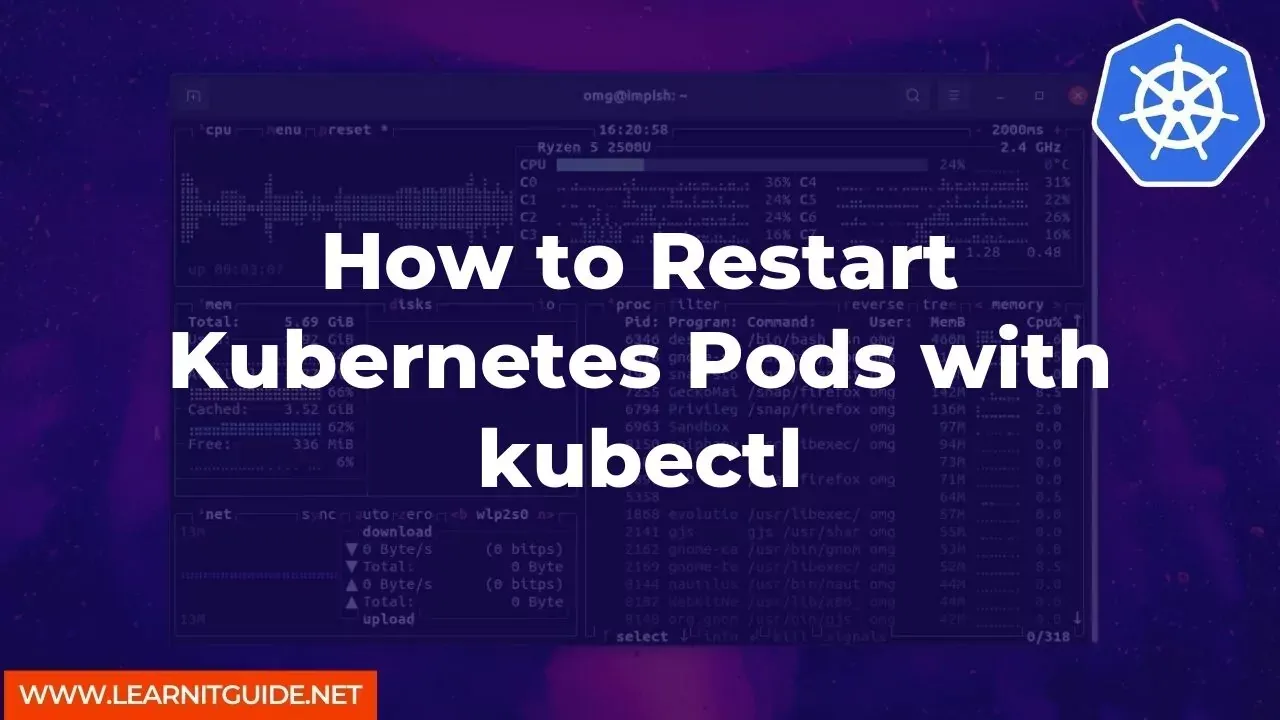Kubernetes is an open-source container orchestration system that automates the deployment, scaling, and management of containerized applications. One of the key features of Kubernetes is its ability to automatically manage the lifecycle of containers, including restarting containers when they fail or become unresponsive. In this article, we will discuss how to restart Kubernetes Pods with kubectl.
What is a Pod in Kubernetes?
A Pod is the smallest deployable unit in Kubernetes and represents a single instance of a running process in a cluster. A Pod can contain one or more containers, which are co-located and share the same network namespace and file system. When a Pod is created, Kubernetes assigns a unique IP address to it, which is used to communicate with other Pods in the cluster.
Why restart Kubernetes Pods?
Kubernetes automatically restarts Pods when they fail or become unresponsive. However, there may be cases where you need to manually restart a Pod. For example, if you have made changes to the configuration of a container and need to apply those changes, you can restart the Pod to pick up the new configuration.
Commands to Restart Kubernetes Pods
To restart a Kubernetes Pod, you can use the kubectl command-line tool, which is the primary tool used to interact with a Kubernetes cluster. The command to restart a Pod is:
kubectl delete pod <pod-name>
This command deletes the specified Pod, which causes Kubernetes to automatically create a new Pod to replace it. When the new Pod is created, it will have the latest configuration changes applied.
Step-by-Step Instructions to Restart Kubernetes Pods
Open a terminal window and connect to your Kubernetes cluster using the kubectl command-line tool.
To list the Pods in the cluster, run the following command:
kubectl get pods
This command will display a list of all the Pods running in the cluster.
Identify the Pod that you want to restart and note its name.
To delete the Pod, run the following command:
kubectl delete pod <pod-name>
Replace <pod-name> with the name of the Pod that you want to restart.
- Kubernetes will automatically create a new Pod to replace the one that was deleted. You can monitor the status of the new Pod by running the following command:
kubectl get pods
This command will display a list of all the Pods in the cluster, including the new Pod that was created.
More Examples
If you want to restart all the Pods in a deployment, you can use the following command:
kubectl rollout restart deployment <deployment-name>
This command will trigger a rolling restart of all the Pods in the specified deployment. Kubernetes will create new Pods one at a time, and only after the new Pod is running will it delete the old Pod.
If you want to force a Pod to restart even if it is not in a failed or unresponsive state, you can use the following command:
kubectl rollout restart statefulset <statefulset-name> --force
This command will force Kubernetes to restart all the Pods in the specified StatefulSet, even if they are not in a failed or unresponsive state.
In this article, we discussed how to restart Kubernetes Pods with kubectl. We learned that Pods are the smallest deployable units in Kubernetes and can contain one or more containers. We also learned that while Kubernetes automatically restarts Pods when they fail or become unresponsive, there may be cases where you need to manually restart a Pod.
We showed how to use the kubectl command-line tool to delete a Pod, which causes Kubernetes to automatically create a new Pod to replace it. Finally, we provided some examples of more advanced Pod restart commands.
Related Searches and Questions asked:
That's it for this post. Keep practicing and have fun. Leave your comments if any.








0 تعليقات